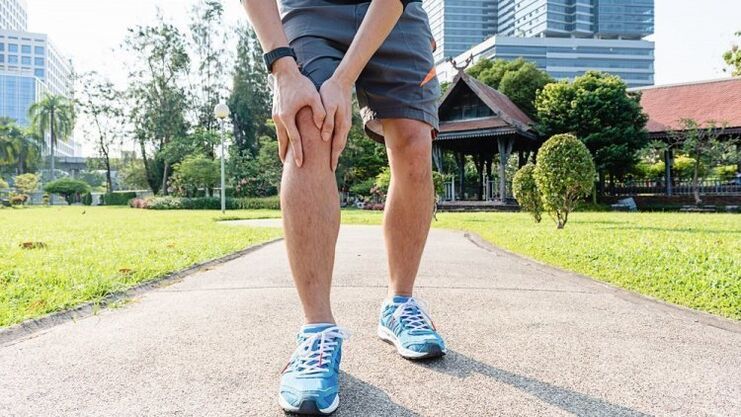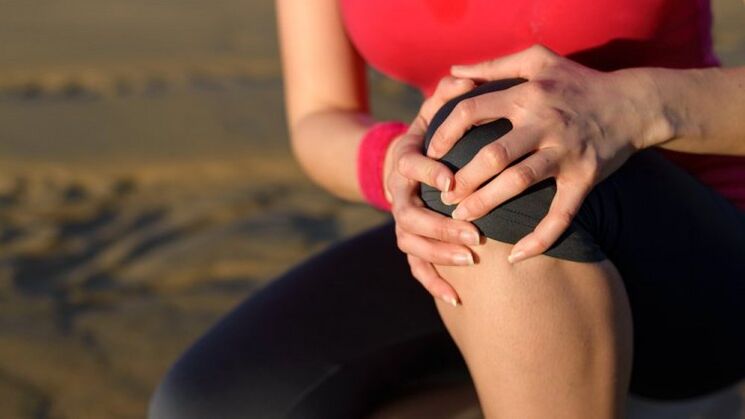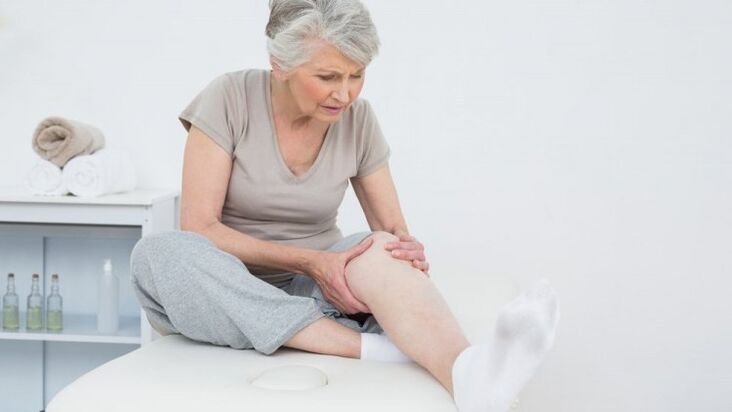Our joints are very healthy. The ends of the bones fit together exactly and are covered with cartilage from above for better sliding. The joint itself is protected by the joint capsule, the ligaments and muscles strengthen it in the front, back and sides. The joint capsule contains a special liquid that ensures gentle movements without jerking, creaking and crunching. This is how healthy joints work. And what happens to you if you have osteoarthritis?
How and why osteoarthritis occurs: obesity, trauma, arthritis
How is osteoarthritis different from arthritis? Arthritis is inflammation of the joints and can be treated and managed until full recovery. With osteoarthritis, the cartilages on the articular surfaces of the bones become deformed, thinner, lose elasticity, become covered with cracks and layered, the amount of synovial fluid decreases. And these changes are unfortunately already irreversible. Therefore, this disease is called degenerative, that is, destructive. The destruction of the joint is influenced by age - over time the cartilage wears out, but the focus is on our upright posture, which puts a lot of strain on the knee joints.
Gonarthrosis is osteoarthritis of the knee joint. This type of osteoarthritis is more common in women and is made worse by obesity and venous disorders. Many older people suffer from osteoarthritis, which is explained by age-related changes in the joint. At a young age, joint injuries during sport or high physical exertion can lead to osteoarthritis. In addition, the development of osteoarthritis is influenced by the weakness of the ligaments and muscles in the knee area, a sedentary lifestyle, arthritis, stress and metabolic disorders, as well as in everyday life - high-heeled shoes and carrying weights (e. g. when shopping, bags). The joint damage is bilateral, but it can also develop in one leg.
Manifestations of osteoarthritis: pain, crunch, stiffness

Knee pain, crunching, stiffness when flexing and extending the joint, especially when standing up and sitting down - all these are signs of osteoarthritis of the knee joint. However, the pain does not come suddenly. At the onset of the disease, it is more a question of knee discomfort, which turns into pain with vigorous exertion, running and movement. If the pain is acute, it can be accompanied by dislocations, sprains, damage to the menisci (elastic cartilage pads in the joint).
With arthrosis of the 2nd degree, knee pain becomes a common companion, especially after long walks and lifting weights. If you give the joint rest, the pain will go away, but will return when the load is resumed. Another symptom of osteoarthritis is swelling of the knee joint. In addition, there is an excessive build-up of synovial fluid (synovitis), a characteristic crunching during movement that causes pain, and then limited mobility in the knee. The patient is unable to bend and bend the leg easily. Trying to straighten it completely causes a lot of pain.
When the osteoarthritis reaches the third degree, the knee joint sometimes loses its mobility completely. People walk on slightly bent legs, suffer from aching pain that often occurs when the weather changes, and can torment at rest, even at night. Patients have to resort to pain medication. At this stage, it is also possible to change the shape of the legs - they either bend outward (legs with a wheel) or inward. It's not uncommon for people to rub their sore knees and intuitively try to improve the flow of blood within them.
Osteoarthritis treatment: weight loss, exercise is life

The diagnosis of osteoarthritis is made through an X-ray examination. Typical changes are the narrowing of the joint space, the appearance of osteophytes (salt deposits), the destruction of bones. Many patients come to the doctor when it becomes difficult to fall asleep at night without anesthesia. Although the changes in the joints are irreversible, there are some things you can do to improve the patient's life. Treatment for osteoarthritis begins with weight loss. In addition, it will be necessary to rely on a sensible diet that is not too high in calories, as the possibility of physical activity is limited. This is the first thing any doctor says to a patient with osteoarthritis of the knee.
The second aspect of osteoarthritis treatment, oddly enough, is movement. If the changes in the joints are not yet fatal, not in the last stage, just the movements - but the movements are correct! - can extend their life. There are no blood vessels in the cartilage, it is nourished by diffusion, and movement is necessary for exchange to occur, for cells to renew and for the cartilage to live.
But which movements should be considered correct? Of course, those who do not put any strain on the knee joint. Let's not torment the reader - the best sport for osteoarthritis is swimming. This is an excellent workout of ligaments, cartilage, muscles without vertical load, given by walking and standing. It is necessary to avoid running, sports games, and jumping. Yes, joint pain and you can't particularly speed it up.
The second method of movement is suitable for those who visit the gym or have bought a simulator at home called an ellipsoid. It looks like a bike standing up and at the same time like cross-country skiing. When working on this simulator, we avoid shock loads on the knee joints and at the same time train muscles and ligaments. The ellipsoid moves smoothly but does not provide a weak aerobic load. Therefore, through training, we also solve the problem of obesity.
Medical and surgical treatment of the knee joint

The medical part of osteoarthritis treatment is the use of non-steroidal anti-inflammatory drugs for pain. The doctor will help you choose a dose that will reduce pain and inflammation (and it will still be there) and swelling. Sometimes analgesics are added because the pain can be very severe - it disrupts sleep, eating, and life in general. In some cases, it comes down to prescribing antidepressants.
If, despite all efforts, the described osteoarthritis treatment does not help and the destruction of the joint continues, which leads to complete immobility (and, as you know, the less we move, the faster the fat layer grows), there is a radical cure - surgical replacement of the diseased jointon the prosthesis. It consists of an imitation of the end of the femur (above) and menisci that fit on the surface of the tibia (below). Operation is not easy, but it is well established and, so to speak, routine. There are many of them in the world. After surgery, a rehabilitation program has been developed that allows a person to not only get exercise, but return to a full, active lifestyle.





















